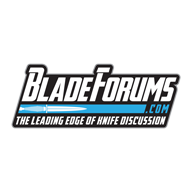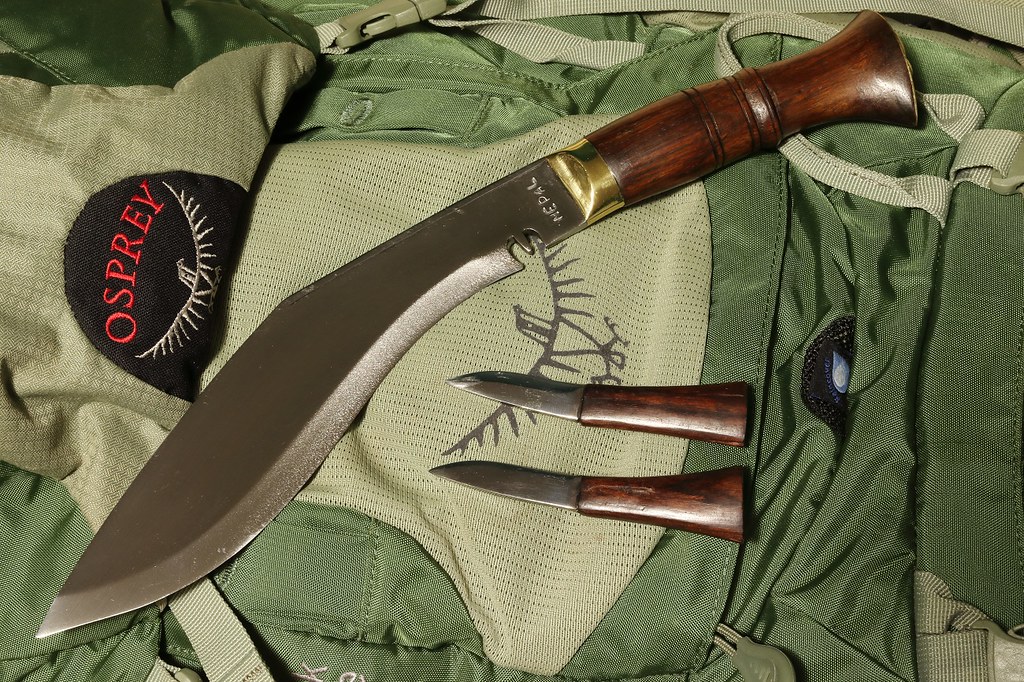-
The BladeForums.com 2024 Traditional Knife is ready to order! See this thread for details: https://www.bladeforums.com/threads/bladeforums-2024-traditional-knife.2003187/
Price is$300$250 ea (shipped within CONUS). If you live outside the US, I will contact you after your order for extra shipping charges.
Order here: https://www.bladeforums.com/help/2024-traditional/ - Order as many as you like, we have plenty.
You are using an out of date browser. It may not display this or other websites correctly.
You should upgrade or use an alternative browser.
You should upgrade or use an alternative browser.
Is this khukri worth buying?
- Thread starter APS89
- Start date
- Joined
- Feb 27, 2005
- Messages
- 8,386
Why not just go Kailash Blades, Khukuri House, or one of the other Nepalese manufacturers? They are making 100% traditional khukuris, and there are a bunch of options for under $100 to your door.
- Joined
- Oct 2, 1998
- Messages
- 46,385
I don't know the prices on Himalayan Imports' gear currently, but that's where I'd start looking, especially since they've been denizens here for decades.
 www.bladeforums.com
www.bladeforums.com
Himalayan Imports
Your place to find information about Himalayan Imports, manufacturer of the finest khukris in the world.
 www.bladeforums.com
www.bladeforums.com
I can't get them shipped to my country.Why not just go Kailash Blades, Khukuri House, or one of the other Nepalese manufacturers? They are making 100% traditional khukuris, and there are a bunch of options for under $100 to your door.
Besides this one is much cheaper.
Can you state your thoughts on the khukri in OP?
Thanks
- Joined
- Feb 27, 2005
- Messages
- 8,386
I'm primarily concerned about the handle design. It appears 'traditionally' made in the sense that frankly, traditional kukris are made in a fairly primitive environment, often from leaf springs as this one appears to be, and with a very basic heat treat. 5160 leaf springs are quite forgiving of that. But the handle angle is off from the main line of the knife and seems very roughly finished. How much are they asking for this?I can't get them shipped to my country.
Besides this one is much cheaper.
Can you state your thoughts on the khukri in OP?
Thanks
12 US dollars excluding delivery charges.I'm primarily concerned about the handle design. It appears 'traditionally' made in the sense that frankly, traditional kukris are made in a fairly primitive environment, often from leaf springs as this one appears to be, and with a very basic heat treat. 5160 leaf springs are quite forgiving of that. But the handle angle is off from the main line of the knife and seems very roughly finished. How much are they asking for this?
Can you suggest any improvements? I will request the blacksmith to implement those suggestions.
- Joined
- Feb 27, 2005
- Messages
- 8,386
Well heck for $12 it's probably more than worth it. I would personally recommend dropping the tang and handle slightly. What that knife appears to be is more of a bolo chopper than a kukri. A kukri has a consistent curve along its central axis, that knife is more of a straight line from the end of the tang to end of the fuller with a curve only at the very end.12 US dollars excluding delivery charges.
Can you suggest any improvements? I will request the blacksmith to implement those suggestions.
- Joined
- Jun 29, 1999
- Messages
- 9,932
Nope. You generally get what you pay for.
The quenching process is flawed. The handle's design is poor. The maker did not use traditional Nepali glue to attach the handle.
Other issues?
I wanted a cheap traditional khukri. Is it worth buying?
Bill Siegle
Knifemaker / Craftsman / Service Provider
- Joined
- Oct 3, 2000
- Messages
- 6,860
For $12? Yeah get one and have fun with it
- Joined
- Jul 23, 2021
- Messages
- 1,261
Definitely worthwhile to get your Kukris from Nepal, but for the most part what you have to remember about this blade is that it was the man using it that made it famous, not for the quality of their bladesmiths. It's about how you value these items. I have a hand hammered cleaver from the street markets of Korea that I treasure, not because it's better than my Shun kitchen knives, but because it's a handmade knife made by a guy using an old style of smithing.Why not just go Kailash Blades, Khukuri House, or one of the other Nepalese manufacturers? They are making 100% traditional khukuris, and there are a bunch of options for under $100 to your door.

- Joined
- Jan 15, 2001
- Messages
- 3,869
I would buy THAT knife. The heat treat was OK, looked like the file skated across the edge without digging in, seemed to chop OK, with no edge deformation, but would you get the knife in the video? It would not be a traditional khukri, but might make a good chopper if you got THAT particular knife. John
If I had to guess, I'd say that knife's weight is under 500 grams. How much under, who knows. It also is fairly narrow without a wide belly. So this will not make the greatest chopper if you are wanting to use it to make deep cuts into 4" branches or larger. A longer, heavier model would be better for that. But this one would be fine for limbing branches and cutting stuff around the house. It also won't wear you out as fast as say a 700 gram model. It is not as curved as most Khukuris are and so it also loses some of the cutting action that comes from that more acute angle. This one is straighter. For $12 though, it can cut lots of stuff and maybe never wear out. I've no idea what he treated that handle with. You could also reshape it to better fit you. That is one problem area with knives from Nepal. I think they only soak mostly unaged wood with mineral oil. I wish they would soak it with some 50% tung oil I have here. I'm hoping that when mine gets here it will eventually take more oil. But you will have to remember to put something better then mineral oil on your wood. Mineral oil just doesn't last long. That handle method of attaching wouldn't be all that difficult to do yourself if someday it does come off. These blacksmiths have an almost impossible task of trying to find better supplies to work with. He may not be able or willing to pay for a glue. I'm not sure what all that heat would do to a glue anyway. I doubt you are going to get him to change his ways much.
Another thought, if you were to buy from another tourist maker, many times you get something that will weight twice as much as this one. That's alot of weight to swing around unless you are in shape and built for it. Many cheaper tourist blades are very thick and heavy. At least this one looks to be close to 6mm/1/4" thick. Some come in at 10mm/1/2". At least your guy spread that steel out and thinned it. Many save time and energy and don't bother to.
Another thought, if you were to buy from another tourist maker, many times you get something that will weight twice as much as this one. That's alot of weight to swing around unless you are in shape and built for it. Many cheaper tourist blades are very thick and heavy. At least this one looks to be close to 6mm/1/4" thick. Some come in at 10mm/1/2". At least your guy spread that steel out and thinned it. Many save time and energy and don't bother to.
Last edited:
